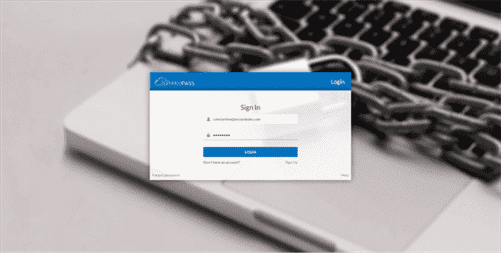At the end of that process, the operations team is able to deploy an app to production quickly and easily. To make it more complicated, sometimes “continuous delivery” is used in a way that encompasses the processes of continuous deployment as well. With continuous integration (CI), the code is merged to the mainline (shared repository) frequently, often multiple times a day. The changes undergo automatic software tests (unit and integration tests) to validate the application’s wholeness and integrity.

APIs are the end points where different modules communicate with one another, and API tests validate them by making calls from one module to another. More than 2,100 enterprises around the world rely on Sumo Logic to build, run, and secure their modern applications and cloud infrastructures. Test-Driven Development (TDD) refers to writing the test cases before performing any actual coding. In a typical TDD scenario, developers and product managers discuss the specifications and the list of requirements.
Building CI pipelines for serverless applications
A developer should only need a few minutes to make their work available to the rest of the team. If an error is discovered, it can be detected immediately, and in the best case, quickly corrected. Because CI/CD simplifies software development, teams can deliver higher-quality applications. Developers can also validate application security during development instead of waiting for the testing stage, helping to reduce or avoid rework of application code. One of the aims of continuous integration is to ensure that the application is always functional and ready for deployment.

Making builds readily available to stakeholders and testers can reduce the amount of rework necessary when rebuilding a feature that doesn’t meet requirements. Additionally, early testing reduces the chances continuous integration solutions that defects survive until deployment. Finding errors earlier can reduce the amount of work necessary to resolve them. By committing regularly, every committer can reduce the number of conflicting changes.
Continuous Integration vs. Continuous Delivery vs. Continuous Deployment
Rather, you want to be able to
get changes reviewed, integrated, tested, and deployed as fast as possible. This
process results in software development and delivery that is
faster and more stable
(PDF) when the changes are small and self-contained, and the branches they live
on are short-lived. This in turn makes it easier and quicker to detect, triage, and
fix any problems. Agile is a software development practice that improves how software development teams organize themselves, adapt to changes in requirements and release software. When applied in DevOps, these combined practices help to ensure software quality and project flexibility. Continuous integration is a software development process where developers integrate the new code they’ve written more frequently throughout the development cycle, adding it to the code base at least once a day.

In large projects, companies have critical data and software in databases and on servers. Continuous integration & continuous delivery, i.e., CI/CD pipeline tools, technologies, and stages, are the pillars on which DevOps culture is architected. These are tools and technologies that eliminate the need to manually integrate different dependencies or manually test the code-base for security & design loopholes. CI/CD approach instead automates the entire operations process from integration to delivery, testing, and deployment.
What are the factors driving applications of the Continuous Alumina Fiber Market?
Yet, developers, QA engineers, and leaders are still posed with some challenges and roadblocks in adopting and efficiently implementing CI/CD tools. This article highlights the top 10 CI/CD challenges that people face during implementation, and we will also discuss their potential solutions. One of the most important things when it comes to continuous integration is that a faulty version must never remain on the mainline.

According to which the developers write codes, this list is further converted into a checklist of code. A single repository and automated build provide full visibility for everyone working on the project. This also allows them to coordinate and work on the issues at hand before they turn into bigger problems. https://www.globalcloudteam.com/ Bitbucket pipelines is a great utility to bring a project up to speed with modern CI features. Some popular options are Codeship, Bitbucket Pipelines, SemaphoreCI, CircleCI, Jenkins, Bamboo, Teamcity, and many others. These tools have their own in-depth setup guides and documentation to help get started.
Tools to use for CI/CD
CI makes sure that all these processes continue to happen no matter what. The frequent testing and deployment of code reduce the project’s risk level, as now the code defects and bugs can be detected earlier. This states that these bugs and errors can be easily fixed and take less time, making the overall process cheaper. The general working speeds up the feedback mechanism that makes the communication smoother and effective. If your organization strives to reap the benefits of a DevOps approach or simply has a multiple-developer software team, CI is important. It will help your engineering organization execute quicker and more effectively.
- Case-by-case, what the terms refer to depends on how much automation has been built into the CI/CD pipeline.
- We’re the world’s leading provider of enterprise open source solutions—including Linux, cloud, container, and Kubernetes.
- Teams using CI/CD also tend to front-load their quality checks, like starting out with version control configuration and practice definitions.
- CD focuses on delivering any validated changes to the code base—updates, bug fixes, even new features—to users as quickly and safely as possible.
- This highly scalable tool is easy to install and set up for projects hosted on GitLab thanks to GitLab API.
- Implementing CI/CD is a priority to ensure faster build, delivery, and deployment cycles, and it helps automate the tasks and is in adherence to the DevOps culture.
CI/CD Pipeline follows the DevOps approach to accomplish the mentioned goal. Summary IT organizations who have adopted agile processes & transformations or gone towards cloud migration give a lot of weightage to what they call DX (developer experience). Implementing CI/CD is a priority to ensure faster build, delivery, and deployment cycles, and it helps automate the tasks and is in adherence to the DevOps culture. In this type of integration, developers insert finished code snippets into the application regularly – sometimes several times a day – instead of integrating them all at the end of the project. Understand what end users expect from products, since this dictates how software development teams will be aligned to enable these capabilities. A software solution may have many features, but some of them—or even just one of them—may be most critical to customers.
Continuous integration: definition
The global Continuous Alumina Fiber size is segmented on the basis of application, end user, and region, with a focus on manufacturers in different regions. The study has detailed the analysis of different factors that increase the industry’s growth. This study also provides the scope of different segments and applications that can potentially influence the industry in the future. Pricing analysis is covered in this report according to each type, manufacturer, regional analysis, and price. In addition, this report introduces the market competition situation among the distributors and manufacturers profile, market value analysis, and cost chain structure are covered in this report. CI/CD introduces ongoing automation and continuous monitoring throughout the lifecycle of apps, from integration and testing phases to delivery and deployment.
This small team needs regular updates and must be able to integrate and test their code as a whole. Open source continuous integration tools to consider for your software development workflow include Jenkins, Go, Buildbot and Travis CI, which you can read about in the next section. Continuous integration is an agile and DevOps best practice of routinely integrating code changes into the main branch of a repository, and testing the changes, as early and often as possible. Ideally, developers will integrate their code daily, if not multiple times a day.
What Is Continuous Deployment?
Now, let’s take a look at the overview of the top seven continuous integration tools that can make the workflow of your project easier and more productive. Adopting a continuous integration approach is one of the best things your team can do in terms of improved efficiency. And since its success relies heavily on continuous integration tools, you have to carefully select the ones that fit your needs best. We’ve looked at seven of the most popular continuous integration tools and listed their advantages to help you choose among similar options. Disoft, a leading software development company headquartered in New York, has become a hub for innovation, technology, and IT talent.